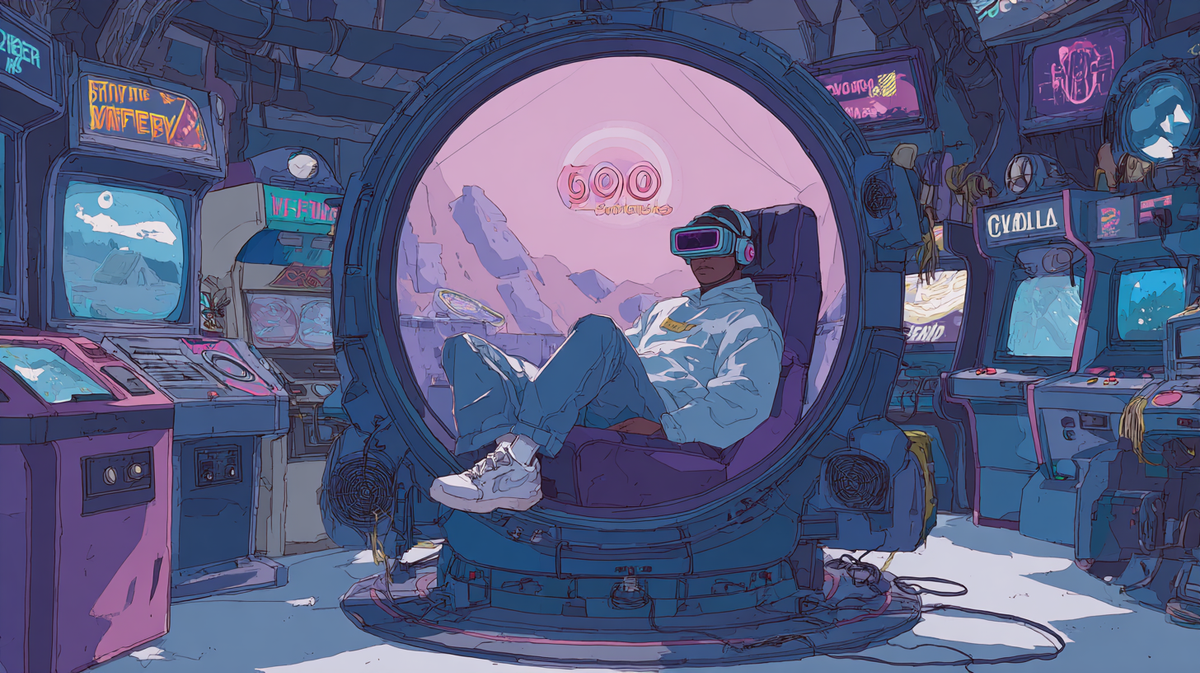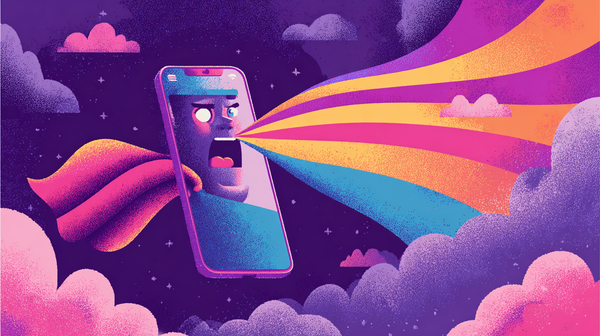📬 Remix Reality Weekly: Back to the Future of the ’90s

Your free Friday drop of spatial computing updates—plus what Remix Reality Insiders unlocked this week.
🛰️ The Signal
This week’s defining shift.
Apple continues to invest in its vision for spatial computing.
The company is showing its continued commitment to its spatial computer, Vision Pro, through major updates across hardware and software. These moves signal Apple sees immersive computing as the next chapter of its platform strategy.
👉 Get access to the full insight in this week’s Insider drop.
📡 Weekly Radar
Your weekly scan across the spatial computing stack.
🚗 Waymo to Launch Driverless Ride-Hailing in London by 2026
- Waymo plans to launch its fully autonomous ride-hailing service in London in 2026, with no human drivers in the vehicle.
🤖 Diligent Robotics Joins AARP Accelerator to Bring Moxi to Senior Care Communities
- Diligent Robotics has been accepted into the AgeTech Collaborative from AARP, an 8-week program for early-stage technology companies focused on aging.
💻 NVIDIA Starts Shipping AI Supercomputer DGX Spark for Physical AI Development
- NVIDIA has begun shipping DGX Spark systems globally, enabling local development of agentic and physical AI.
🕶️ Snap Announces Major Brand Partners for AR Glasses Ahead of Consumer Launch
- Snap announced that Lenses from Paramount, ILM Immersive, Tripadvisor, and Figma will be available for its AR glasses, Spectacles.
🗺️ Niantic's Peridot Evolves Into a Navigating, Emotionally Aware AI Companion
- Peridot can now guide users through real-world spaces, using visual input and smart pathfinding to navigate.
🍎 Apple Vision Pro Gets M5 Chip and Comfort Upgrade
- Apple’s updated Vision Pro now includes the new M5 chip, Dual Knit Band, and visionOS 26, starting at $3,499 and available October 22.
👻 Snap Celebrates 4 Million Lenses and a Decade of AR
- Snap celebrates 400,000 creators and 4 million Lenses over the past 10 years and introduced new tools, including ML-powered effects and Lens Studio AI.
🌐 Apple Expands Immersive Web Capabilities on visionOS with New Safari Update
- WebKit now supports interactive 3D models via the new <model> HTML element on visionOS.
🌱 Ecorobotix Secures $105M to Scale Real-Time, Centimeter-Precise Crop Spraying
- Ecorobotix raised $150 million across Series C and D rounds to expand its real-time AI spraying platform.
🏙️ 375ai Secures $10M to Scale Edge Intelligence for Real-World AI
- 375ai raised an additional $5 million to expand its edge data intelligence network, bringing total funding to $10 million.
🎭 Imvizar Launches Immersive AR Experience at TCL Chinese Theatre
- Imvizar has launched a free AR experience at the TCL Chinese Theatre during LA Tech Week.
🏀 Spectrum to Stream Lakers Games in Apple Immersive Format on Vision Pro
- Select Los Angeles Lakers games will stream live in Apple Immersive format on Vision Pro during the 2025–26 NBA season, with replays and highlights available on demand.
🌀 Tom's Take
Unfiltered POV from the editor-in-chief.
The return of Nintendo’s Virtual Boy for the Switch hit me with a wave of nostalgia. It pulled me straight back to the '90s, when arcades and home gaming systems were experimenting with ways to make gaming feel more physical.
Two experiences from that era still stand out to me. Sega’s Time Traveler holographic game and Virtuality's VR arcade system. I tried both of these when I was a teen in the '90s, and they made me feel, for the first time, that digital worlds could feel just as real as this physical reality.
Sega's Time Traveler wasn’t really holographic, but when you stood in front of that curved mirror of the arcade cabinet and saw life-size actors floating in midair, it didn’t matter. It was pure magic. It was my first real taste of augmented reality, long before the term existed in the mainstream. Watching those tiny figures come alive in light and glass (using Pepper's Ghost) made me believe games could live in the same space as we do.
Then there was my first VR experience, which took place in a bright colored pod at Canada’s Wonderland from Virtuality. Virtuality gave many people their first taste of virtual reality, long before most homes had a personal computer. The headset was massive, the visuals were simple, and the motion was far from smooth. But stepping into that world felt like entering the future. For a moment, the screen wasn’t there at all.
Looking back, those early systems were rough, but they revealed what immersion truly means. It isn’t about visuals or performance but about presence, that brief moment when the digital world feels real.
I think that we are still chasing that same feeling today, with headsets, smartglasses, and spatial displays that trace their roots back to these early experiments. At their core, all of these efforts stem from the belief that immersive technology can make us part of the digital experience instead of outside spectators.
🔒 What Insiders Got This Week
This week’s Insider drop included:
- 🧠 Reality Decoded: Our first deep dive from Catherine Henry on flying cars and personal aviation.
- 🔮 What’s Next: Wearables are becoming jewelry; mobile AR is getting easier to build; and content is the competitive edge for Snap’s AR glasses.
👉 Unlock the full drop → Upgrade to Insider
🚀 Thanks for being a Remix Reality subscriber!
Know someone who should be following the signal? Send them to remixreality.com to sign up for our free weekly newsletter.
📬 Make sure you never miss an issue! If you’re using Gmail, drag this email into your Primary tab so Remix Reality doesn’t get lost in Promotions. On mobile, tap the three dots and hit “Move to > Primary.” That’s it!







